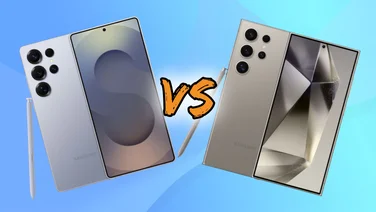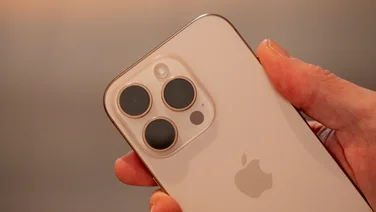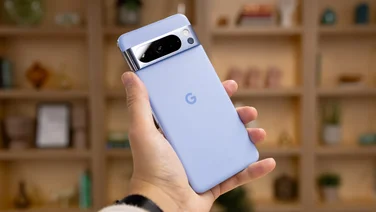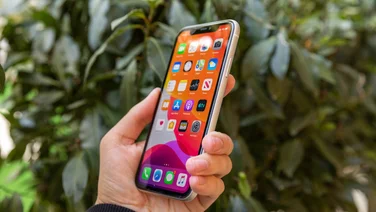To help us provide you with free impartial advice, we may earn a commission if you buy through links on our site. Learn more

The Motorola Razr 60 and Motorola Razr 60 Ultra may be compact handsets but they’ve certainly got some enormous shoes to fill. Announced today, these new folding phones are the latest iteration of what I’ve long considered to be the best flip phone on the market.
Last year’s Motorola Razr 50 Ultra is currently my reigning pick as the handset to go for if you want to make the most of the foldable format, and it emerged victorious when I put it head-to-head with the Samsung Galaxy Z Flip 6, too.
Now, Motorola is aiming to build even further upon that successful formula and, after this first look, I think there’s a strong chance it will succeed. We’ll get into the nitty gritty of each handset below but first, lets take a look at the specs:
| Motorola Razr 60 and Razr 60 Ultra preview: Specifications | ||
|---|---|---|
| Specs | Motorola Razr 60 | Motorola Razr 60 Ultra |
| Price | £799 | £1,099 |
| Processor | 2.6GHz Mediatek Dimensity 7400X | 4.32GHz Qualcomm Snapdragon 8 Elite |
| RAM | 8GB | 16GB |
| Storage | 256GB | 512GB |
| External display | 3.6in, 1,066 x 1,056, 90Hz AMOLED | 4in, 1,272 x 1,080, 165Hz LTPO AMOLED |
| Internal display | 6.9in, 2,640 x 1,080, 120Hz LTPO pOLED | 7in, 2,912 x 1,224, 165Hz LTPO pOLED |
| Battery | 4,500mAh | 4,700mAh |
| Charging | 30W wired; 15W wireless | 68W wired; 30W wireless; 5W reverse wired |
| IP rating | IP48 | IP48 |
| Cameras | 50MP f/1.8 (wide); 13MP f/2.2 (ultrawide); 32MP (selfie) | 50MP f/1.8 (wide); 50MP f/2.0 (ultrawide); 50MP f/2.0 (selfie) |
| Dimensions (WDH) | 74 x 7.3 x 171mm (open); 74 x 15.9 x 88mm (closed) | 74 x 7.2 x 172mm (open); 74 x 15.7 x 88mm (closed) |
| Weight | 188g | 199g |
| Styles | Gibraltar Sea (navy); Spring Bud (green); Lightest sky (slate); Parfait Pink (…pink) | Scarab (black); Mountain Trail (wood); Cabaret (pink); Rio Red (…red) |
Motorola Razr 60 Ultra preview
So, there’s quite a few exciting features to talk about there. Let’s start with the showstopper that is the Motorola Razr 60 Ultra.
Performance and battery
Described by the brand as the ‘most powerful flip phone in the world’, the Motorola Razr 60 Ultra earns that title by utilising the top-of-the-line Snapdragon 8 Elite platform. We see this chipset in top-shelf flagship smartphones like the Samsung Galaxy S25 Ultra, Honor Magic 7 Pro and OnePlus 13, so the Razr is certainly in esteemed company here.
Along with the extremely powerful processor, the Razr 60 Ultra also harbours a much larger battery (4,700mAh, up from last year’s 4,000mAh). Considering I’ve been consistently impressed with the power efficiency of the Snapdragon 8 Elite platform, this could well see us recording the best phone battery life from any flip phone to date.

When the battery does eventually tap out, charging should be nippier, as well. Wired charging has been upped from 45W to 68W and wireless charging has doubled from 15W to 30W. You also get reverse charging this year, which means you can siphon battery from the Razr to your other devices by laying them back to back.
Displays
It looks like we have the same 4in external display as last year, which is absolutely fine by me. That screen had a razor-sharp 1,272 x 1,080 resolution, a refresh rate that dynamically adjusted between 1Hz and 165Hz and was overall the most versatile external display on any flip phone I’ve ever tested. This is very much a case of ‘if it ain’t broke…’

The internal display has seen its bezels shrink by 20%, allowing for a full 7in of display real estate. This is once again a folding pOLED panel with that same dynamic 165Hz refresh rate but the resolution has been upped even more, to a crystal clear 1,440 x 3,120.
Design
Because it’s a folding phone, there’s no protective glass over the internal display but the external screen has been upgraded to Gorilla Glass Ceramic, which supposedly offers 10x the drop protection of last year’s Gorilla Glass Victus. There’s also a robust new titanium-reinforced hinge, which is apparently able to withstand up to 35% more folds than last year, and the phone now has the same IP48 rating as the Samsung Galaxy Z Flip 6 – adding some amount of dust resistance alongside the water resistance.

We’ve got four new Pantone-approved colours to choose from this year, each of which comes in its own unique material finish: the green-black Scarab style has a suede-like Alcantara rear; the hot-pink Cabaret model has a luxe satin-inspired finish; and the wine-coloured Rio Red model is coated in a more traditional faux leather. My favourite of the four is easily the Mountain Trail model, which is coated in real wood, creating a unique and stylish aesthetic.
Cameras
I was a big fan of Motorola swapping out the ultrawide camera for a telephoto lens on the Razr 50 Ultra but not everyone felt the same way. That camp clearly won out because we’ve reverted to an ultrawide for the Razr 60 Ultra. A 50-megapixel ultrawide camera is rather enticing as consolation prizes go, at least.

Joining it are a further two 50-megapixel lenses – one main camera on the rear and a selfie camera at the top of the internal display – but the changes don’t stop there. Dolby Vision recording has now been added to the phone’s video capabilities, allowing you to capture even more bright and vibrant home movies.
Motorola Razr 60 preview
Just as we saw last year with the Motorola Razr 50, the Razr 60 is a slightly pared-down version that aims to deliver the key benefits of the foldable format for those on a tighter budget. I found the Razr 50 nearly got that balance right but fell short in a couple of areas, so it will be interesting to see if the Razr 60 can find a bit more of a solid niche this year.
Displays
So what’s different from the Ultra version? The displays are both a little smaller (6.9in pOLED on the inside with a 3.6in AMOLED externally) and they have slightly lower maximum refresh rates of 120Hz and 90Hz, respectively. The 90Hz may feel a little slower than the Ultra’s external screen but, for my money, there are very few people who will notice the difference between the 165Hz and 120Hz internal displays anyway.
Design
The Razr 60 is most like the Ultra in its build quality. It’s built around the same tough titanium-reinforced hinge at the Ultra, as well as getting that phone’s IP48 rating, too. The only area in which it’s slightly weaker is that it retains last year’s Gorilla Glass Victus for the external display, instead of upgrading to the Ceramic version.

There are four unique Pantone colours on offer here, too, and three of the four material choices (only the Ultra gets the wood finish, unfortunately). Gibraltar Sea is a moody navy blue, Lightest Sky is a slate khaki colour, Spring Bud is an eye-catching green and your final choice is Parfait Pink.
Performance and battery
I’ve not tested any other phones that use the Mediatek Dimensity 7400X yet, so I don’t know what to expect in terms of its performance or power efficiency. Based on the Razr 50, which used the previous generation 7300X, however, I’d guess that we can expect a minor uptick in performance over the Razr 50 and relatively strong battery life.

The latter feels even more likely as, just like the Ultra, the Razr 60 has a larger battery than its predecessor, now a 4,500mAh cell, up from last year’s 4,200mAh. Charging remains the same, however, with 30W wired and 15W wireless.
Cameras
Also unchanged from last year is the camera suite. I found the 50-megapixel (f/1.7) main camera to be a decent enough performer in good lighting, with vibrant colours and sharp detail, but it struggled a little with night shots. Hopefully Motorola has tweaked the processing and we see an improvement there when it comes time for my full review.

Equally, the 13-megapixel (f/2.2) ultrawide camera performed well in my testing, proving to be one of the better at retaining detail in the widened image, but it also had a habit of warming up the tone of the shot to the point where it looked like it had a filter pasted over the top. Again, we’ll have to wait and see if this is fixed.
The 32-megapixel (f/2.4) selfie camera is also the same as last year. Given it’s easy to take selfies with the external cameras on foldables, I see no need to upgrade this one any further, anyway.
Motorola Razr 60 and Razr 60 Ultra preview: Software and AI
That does it for hardware changes, but we have a couple of new details on the software front to discuss, as well. First of all, both phones will be launching with Android 15 and are set for three years of OS updates and five years of security patches.
This is the one area in which Motorola is still trailing behind the competition. For the past couple of generations, Samsung has been committing to a full seven years of support for its foldable phones, which means the Samsung Galaxy Z Flip 6 and even the Galaxy Z Flip 5 from the year before last will receive updates for longer than these brand new Motorola foldables. That’s not a great look.

Motorola is, at least, making efforts to catch up on the AI front. As well as the standard Google Gemini features like the smarter voice assistant and Circle to Search, Moto AI brings features like Catch Me Up, Pay Attention and Remember This to the Razr 60 phones. These are all accessible from the external display, as is the new Next Move feature, which uses context awareness to suggest actions based on what you’re viewing onscreen.
Moto AI also adds some extra functionality to the cameras of both phones. Highlights include an enhanced imaging engine that apparently improves dynamic range and detail capture, Signature Style, which learns your preferences and applies the settings automatically, and Group Shot, which is Motorola’s version of Google’s Best Take group picture compositor.
With its more powerful hardware, the Razr 60 Ultra also gets a little more AI to play with. When in tent or stand mode, you can look at the Razr 60 Ultra and speak commands, with the Look & Talk feature recognising your eye contact and taking action on your request.
That about does it for now, but we’re going to have a lot more to say about the Razr 60 and Razr 60 Ultra in the very near future. I’ll be getting my hands on both for full reviews and then we can see how they compare to last year’s models – and whether or not Motorola once again has the best flip phone around on its hands. Check back in soon to see my final verdict.






